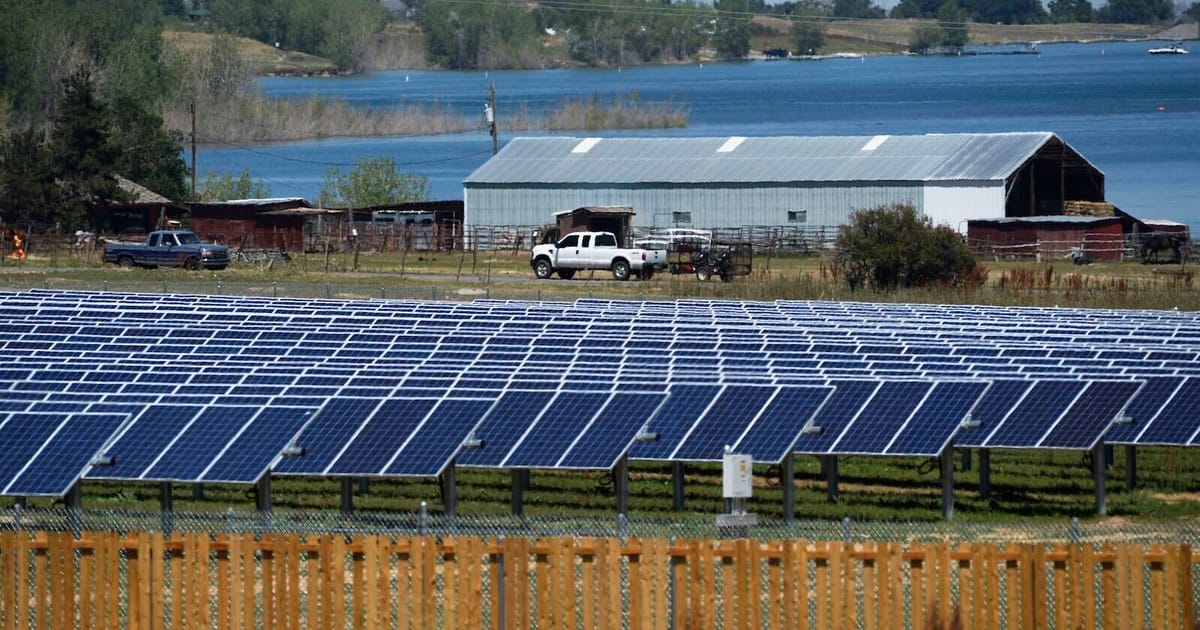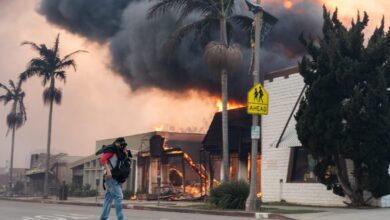The fight over California community solar: ‘It’s…

Community solar and storage could help power California toward its goals for clean energy, grid reliability, energy equity and affordable housing — but only if regulators don’t allow the state’s biggest utilities to undermine it.
That’s the argument a sprawling coalition of solar industry groups, consumer advocates, environmental justice organizations, labor unions and the state’s homebuilding industry has been making before the California Public Utilities Commission over the past few months.
The fight has centered around a new proposed payment structure for community solar called the Net Value Billing Tariff (NVBT), which the coalition says is crucial to revamping California’s moribund community solar market and would make community solar in the state both economical and effective. A structure for community solar payments was ordered up by AB 2316, a state law passed last year.
Now, as the state comes up on a September 26 deadline to apply for its share of $7 billion in federal community solar grants, the coalition is pressing the CPUC to lock in the NVBT program — and not allow it to be derailed by arguments from utilities Pacific Gas & Electric, San Diego Gas & Electric and Southern California Edison.
“On community solar, it’s everyone versus the utilities,” said Brandon Smithwood, senior director of policy at community solar developer Dimension Renewable Energy.
That’s a rare level of consensus in California’s fractured solar policy landscape, where battles over the value of rooftop solar systems have pitted environmental and consumer advocates against each other. But on this issue, groups that “fought for years got together and worked out their differences,” Smithwood said.
The consequences of that coordination could be enormous. If the CPUC approves the NVBT, “California can go from practically no community solar to leading the nation in a few years,” said Derek Chernow, Western U.S. regional director for the Coalition for Community Solar Access, a trade group.
According to analysis from CCSA, the tariff could enable about 8 gigawatts of community solar paired with batteries to be built in the state using existing grid infrastructure, putting it in contention with other leading states for community solar like Colorado, Massachusetts, Minnesota and New York.
That’s far from the estimated 13 gigawatts of rooftop solar installed in California to date. But it’s a big jump from the less than 600 megawatts of community solar developed in California so far under a panoply of programs.
Such an expansion would open up the benefits of solar — namely cheaper, cleaner power — to Californians who can’t install solar panels on the roofs of their homes. That includes both lower-income households and the state’s nearly 17 million renters who lack options for using solar power to reduce their utility bills. Community solar allows a large number of customers to subscribe to a share of a project’s energy output and use the revenues from that to earn credits that offset their utility bills.
What’s different about this community solar (and battery) plan
Several things make the NVBT different from the California community solar programs that have come before, said Aaron Halimi, founder and president of Renewable Properties, a community solar developer headquartered in San Francisco.
First, it would not come with caps on how much capacity can be built before funding dries up. Instead, it would create an open-ended set of rules for how much money project developers can expect to make over the coming decade. That’s critical for giving developers and their financial backers more confidence that it’s worth their effort to focus on the market for the long haul.
“We pivoted our entire California development pipeline for this upcoming community solar program,” Halimi noted.
Second, the NVBT would require installation of batteries alongside community solar projects, to help the state balance an increasingly solar-saturated grid. It would do this by tying the compensation for community solar to something called the avoided-cost calculator, or ACC — a complex formula set by the CPUC that rewards projects that can deliver energy when the grid is under the greatest stress.
In California, those moments of stress have been coming in the late afternoon and evening hours of the summer and early autumn, when solar power is fading but temperatures and air-conditioning electricity demand remain high.
To help the grid weather these peaks, community solar projects will need batteries to make money under the NVBT. In fact, Smithwood said, “I’ve joked we should call it community storage plus solar,” flipping the emphasis from solar to batteries.
This proposed structure fits in with a broader push from the CPUC to encourage the pairing of batteries with solar. The agency has already applied the ACC to how rooftop solar is rewarded, which encourages homeowners to add batteries alongside solar arrays, and it has structured its large-scale energy procurements to emphasize energy storage.
If adopted, the NVBT could also ensure that the potential money-saving benefits of solar are not put even further out of reach for lower-income households and disadvantaged communities. Changes to rooftop-solar policy that went into effect earlier this year have already weakened the economics of rooftop solar in the state and made it harder to afford.
AB 2316 requires that low- and moderate-income households make up at least 51 percent of a community solar project’s subscribers. The coalition behind the NVBT has pledged to structure payments to these households to ensure significant reductions to their utility bills.
“We really need an alternative to allow anyone, regardless of their home status, to subscribe to clean energy that needs to be built in the state, and receive true benefits on their bill,” said Alexis Sutterman, energy equity program manager for the California Environmental Justice Alliance, a coalition of grassroots groups that has joined the push for community solar.
How community solar can fill gaps in the grid and help housing affordability
A key advantage of community solar-battery projects is their flexibility: Because they’re relatively small, typically about 5 megawatts, they can be built and connected to the grid in many places that utility-scale solar can’t, Sutterman said. That could unlock options for dealing with a number of challenges California faces in achieving its climate and energy targets.
One big challenge is the backlog of utility-scale projects trying to connect to the state’s transmission grid. Grid operators and utilities across the country can’t interconnect large-scale solar, wind and battery projects at nearly the pace they’re being planned, and California is no exception.
The CPUC has ordered California’s utilities and community energy providers to procure a massive 85 gigawatts of new clean energy capacity by 2035, more than double the generation capacity on its grid today. But already, utilities are reporting trouble meeting the CPUC’s shorter-term targets of getting 11.5 gigawatts of zero-carbon resources onto the grid by 2026.
Community solar-battery projects avoid this problem because they connect directly to the lower-voltage distribution grids that carry power to customers. Because of their smaller size, they can be sited on empty lots, warehouse rooftops and other areas closer to the customers they serve.
This map from CCSA indicates how much community solar could be sited on open ground or on rooftops across the state (the orange and blue dots), overlaid with the parts of the state designated as disadvantaged communities being targeted for more affordable energy (the dark gray areas).




